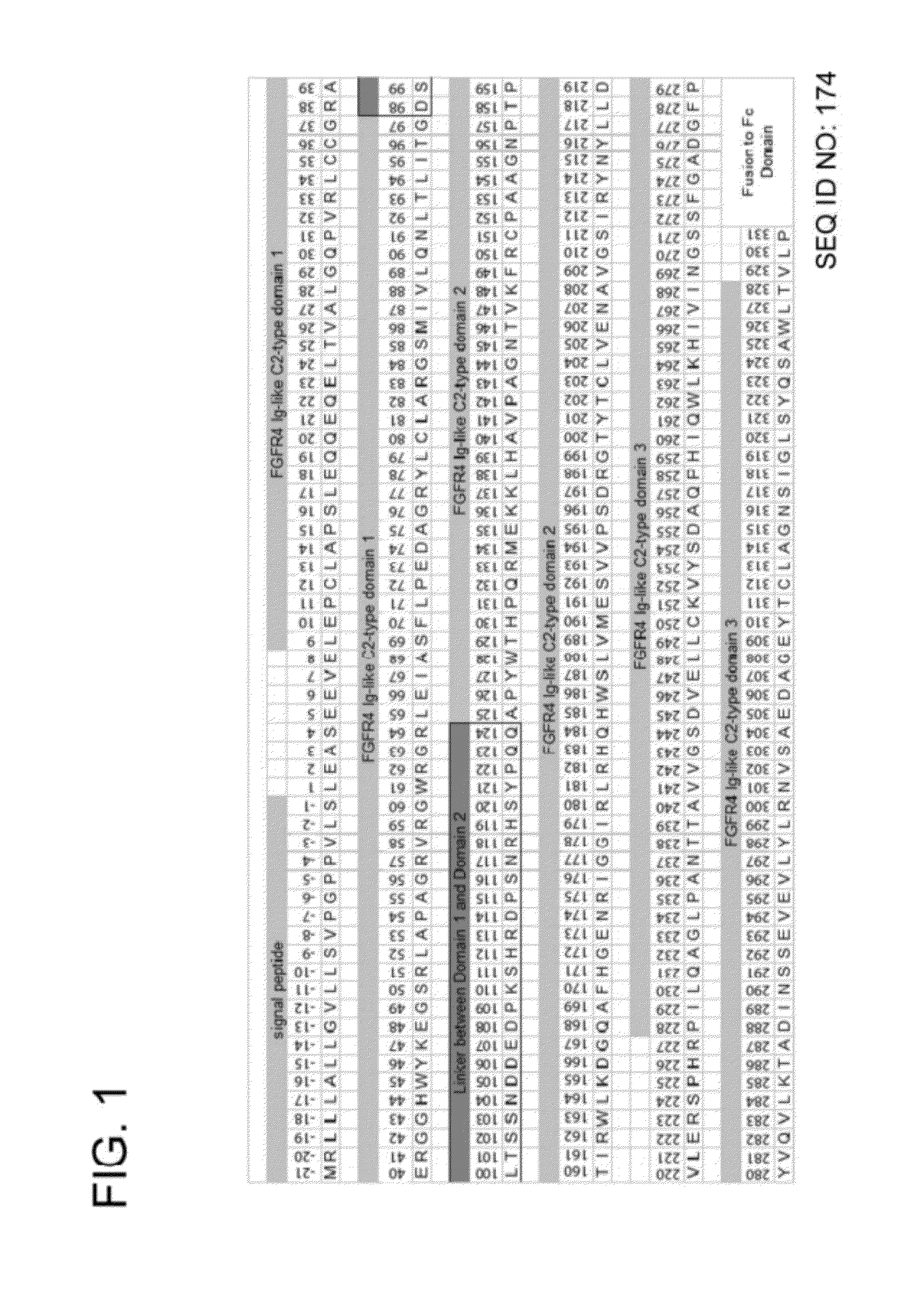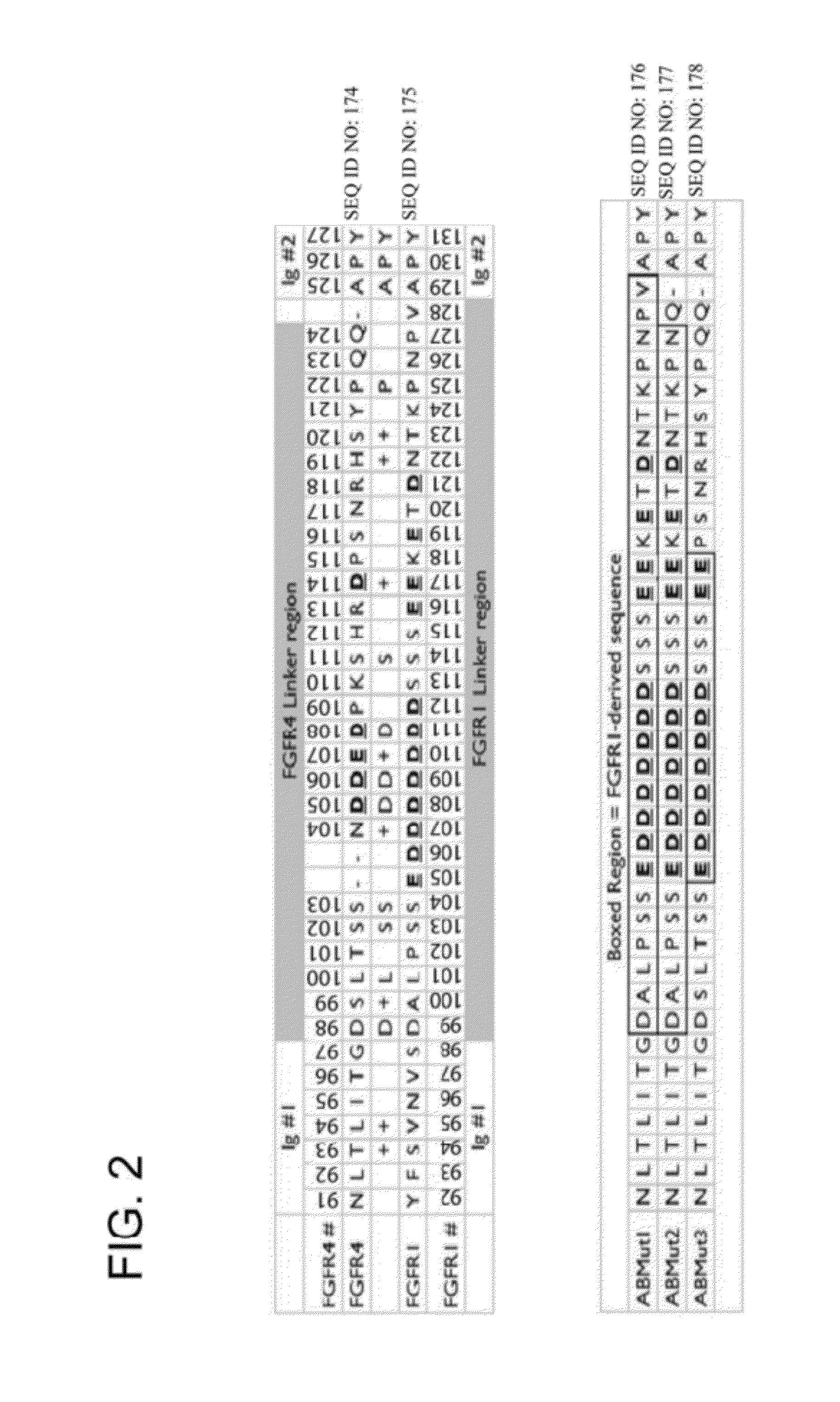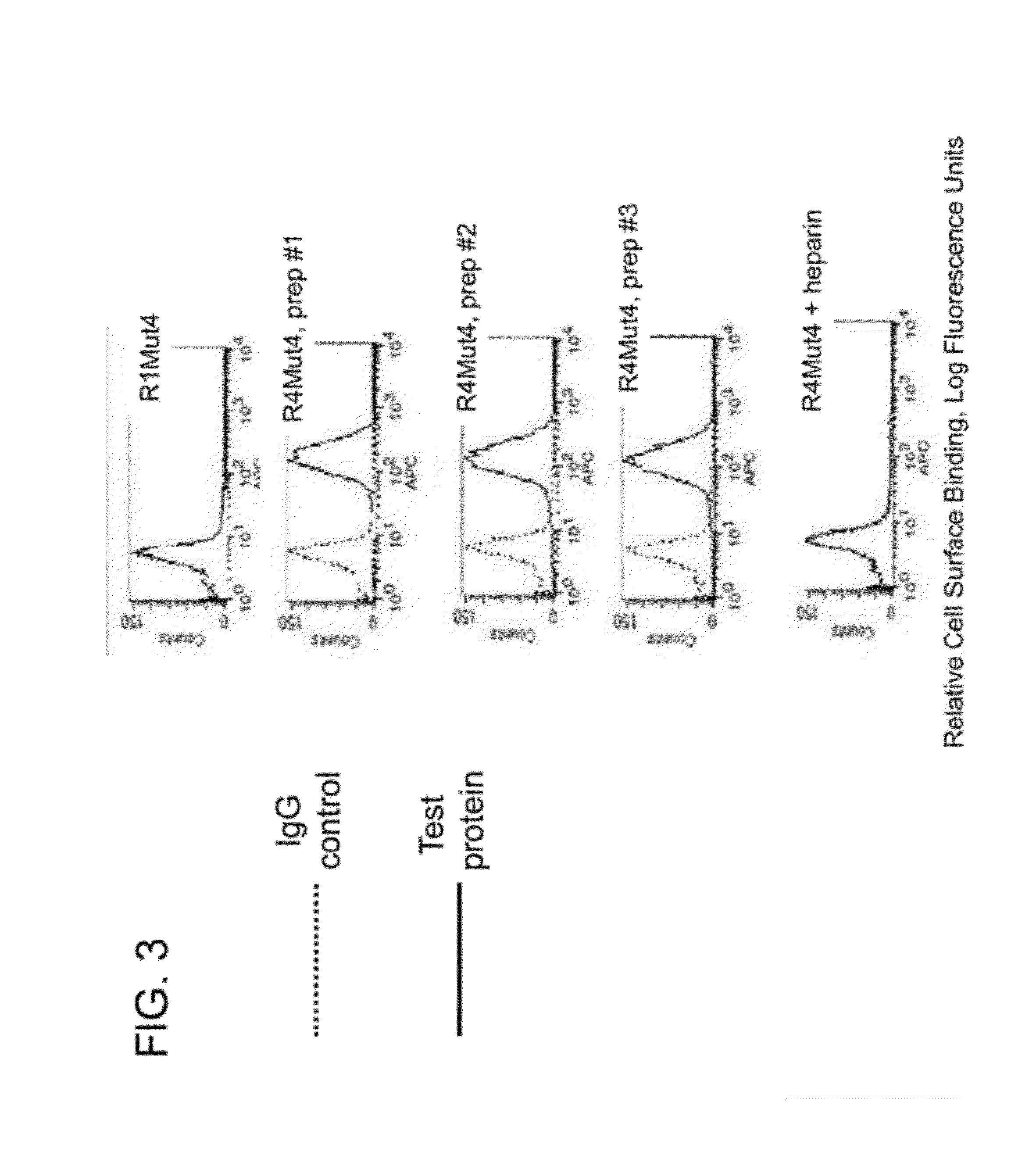FGFR extracellular domain acidic region muteins
a technology of fgfr and extracellular domain, which is applied in the field of fgfr extracellular domain, can solve the problems of short serum half-life and poor bioavailability, and achieve the effects of preventing tissue binding, enhancing ecm binding, and strengthening the acid box
- Summary
- Abstract
- Description
- Claims
- Application Information
AI Technical Summary
Benefits of technology
Problems solved by technology
Method used
Image
Examples
example 1
Construction of Certain FGFR4 ECD-Fc Fusion Molecules
[0181]The cloning, expression and purification of the R1Mut4 fusion protein used in these examples has been previously described (WO 2007 / 014123). The cloning of the parental FGFR4 ECD-Fc fusion protein used in these examples has also been described (WO 2007 / 014123, called “R4Mut4”). For transient expression in 293-6E cells, R4Mut4 was cloned into and expressed from vector pTT5 (Biotechnology Research Institute, Montreal, Canada). Chimeras of the R4Mut4 fusion protein were constructed using PCR and conventional mutagenesis techniques. The R4Mut4 chimeras were originally cloned into the mammalian expression vector pcDNA3.1 (Invitrogen) for transient expression in 293-6E cells.
[0182]The primary sequence and domain structure of the FGFR4 moiety in the parental R4Mut4 construct is shown in FIG. 1. The stretch of amino acids between the first and second immunoglobulin (Ig) domains (amino acids 98 to 124) is denoted interchangeably here...
example 2
Transient Expression of Fusion Proteins in 293-6E and CHO-S Host Cells
[0186]In certain Examples herein, fusion protein was transiently expressed in 293-6E cells. The R4Mut4 / pTT5 expression vector described in Example 1 was designed to provide transient expression in 293-6E host cells. The 293-6E host cells used for expression were previously adapted to serum-free suspension culture in Free-Style medium (Invitrogen). The cells were transfected with the expression vector while in logarithmic growth phase (log phase growth) at a cell density of between 9×105 / ml and 1.2×106 / ml.
[0187]In order to transfect 500 ml of 293-6E cell suspension, a transfection mixture was made by mixing 500 micrograms (ug) of the expression vector DNA in 25 ml of sterile phosphate buffered saline (PBS) with 1 mg of polyethylenimine (from a 1 mg / ml solution in sterile water) in 25 ml of sterile PBS. This transfection mixture was incubated for 15 min at room temperature. Following incubation, the transfection mix...
example 3
Purification of Expressed Proteins
[0190]FGFR ECD-Fc fusion proteins expressed from recombinant host cells were purified from the cell culture supernatant using a first purification step of Protein-A affinity chromatography, followed by a second purification step of butyl hydrophobic interaction chromatography. For the Protein-A affinity chromatography step, the components of the media were separated on a Mabselect Protein-A Sepharose column (GE Healthcare Bio-Sciences, Piscataway, N.J.), which will bind to the Fc region of the fusion molecule. The column was equilibrated with ten column volumes of a sterile buffer of 10 mM Tris, 100 mM NaCl, pH 8.0; then the cell culture supernatant was applied to the column. The column was washed with eight column volumes of sterile 10 mM Tris, 100 mM NaCl buffer, pH 8.0. The bound material, including R4Mut4, was then eluted at a rate of 10 ml / min with a one step elution using seven column volumes of elution buffer (100 mM glycine, 100 mM NaCl, pH ...
PUM
| Property | Measurement | Unit |
|---|---|---|
| pH | aaaaa | aaaaa |
| pH | aaaaa | aaaaa |
| flow rate | aaaaa | aaaaa |
Abstract
Description
Claims
Application Information
 Login to View More
Login to View More - R&D
- Intellectual Property
- Life Sciences
- Materials
- Tech Scout
- Unparalleled Data Quality
- Higher Quality Content
- 60% Fewer Hallucinations
Browse by: Latest US Patents, China's latest patents, Technical Efficacy Thesaurus, Application Domain, Technology Topic, Popular Technical Reports.
© 2025 PatSnap. All rights reserved.Legal|Privacy policy|Modern Slavery Act Transparency Statement|Sitemap|About US| Contact US: help@patsnap.com



